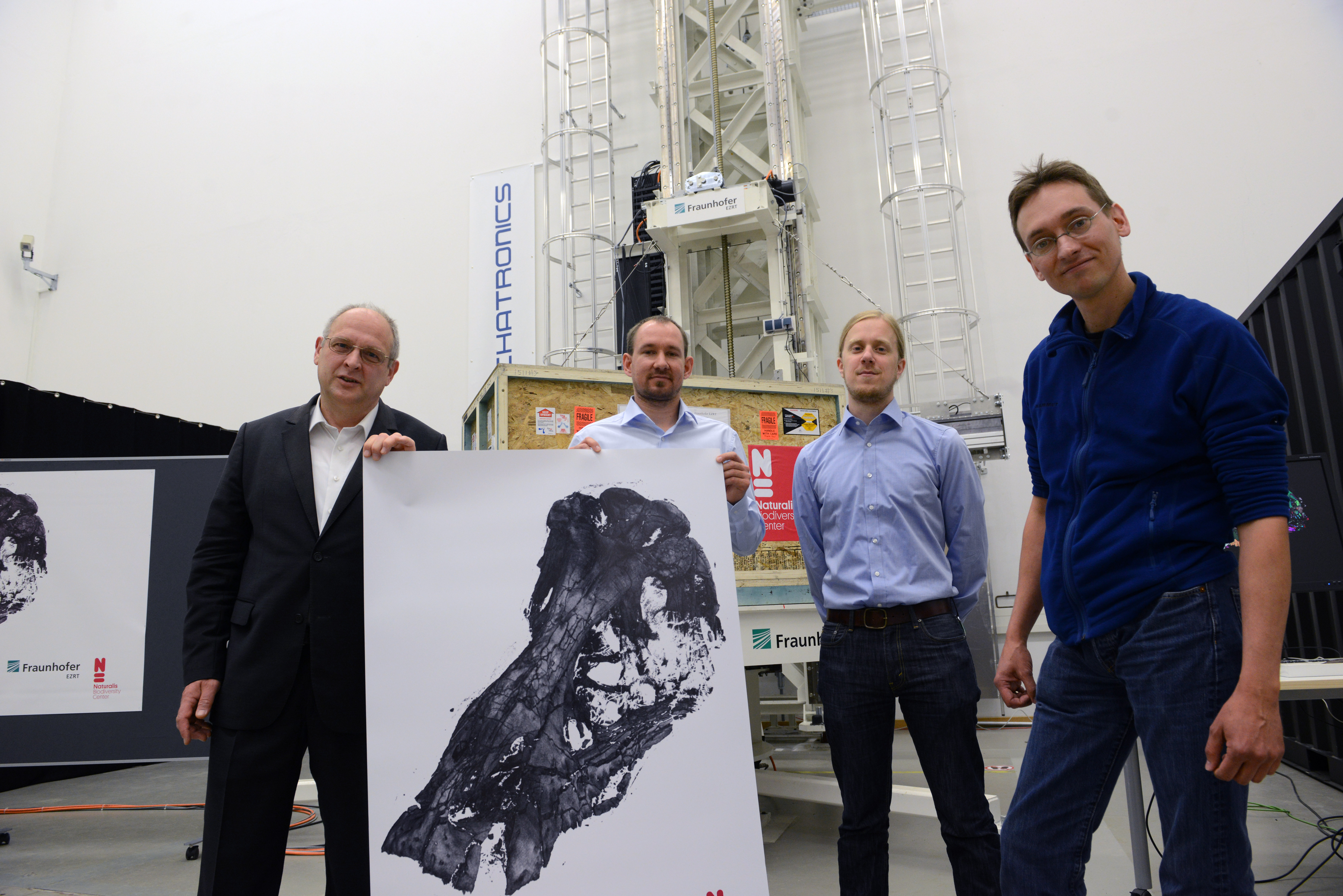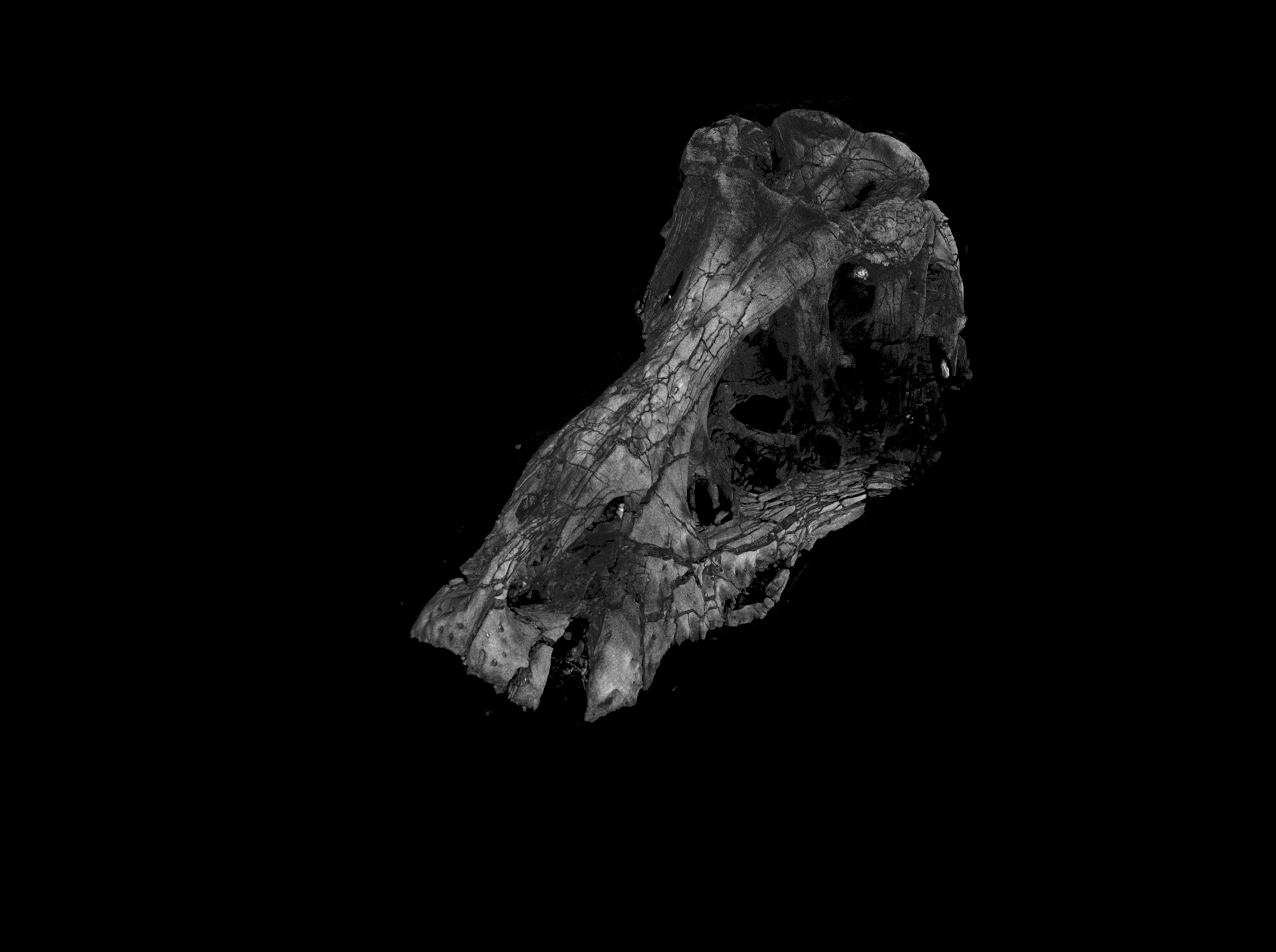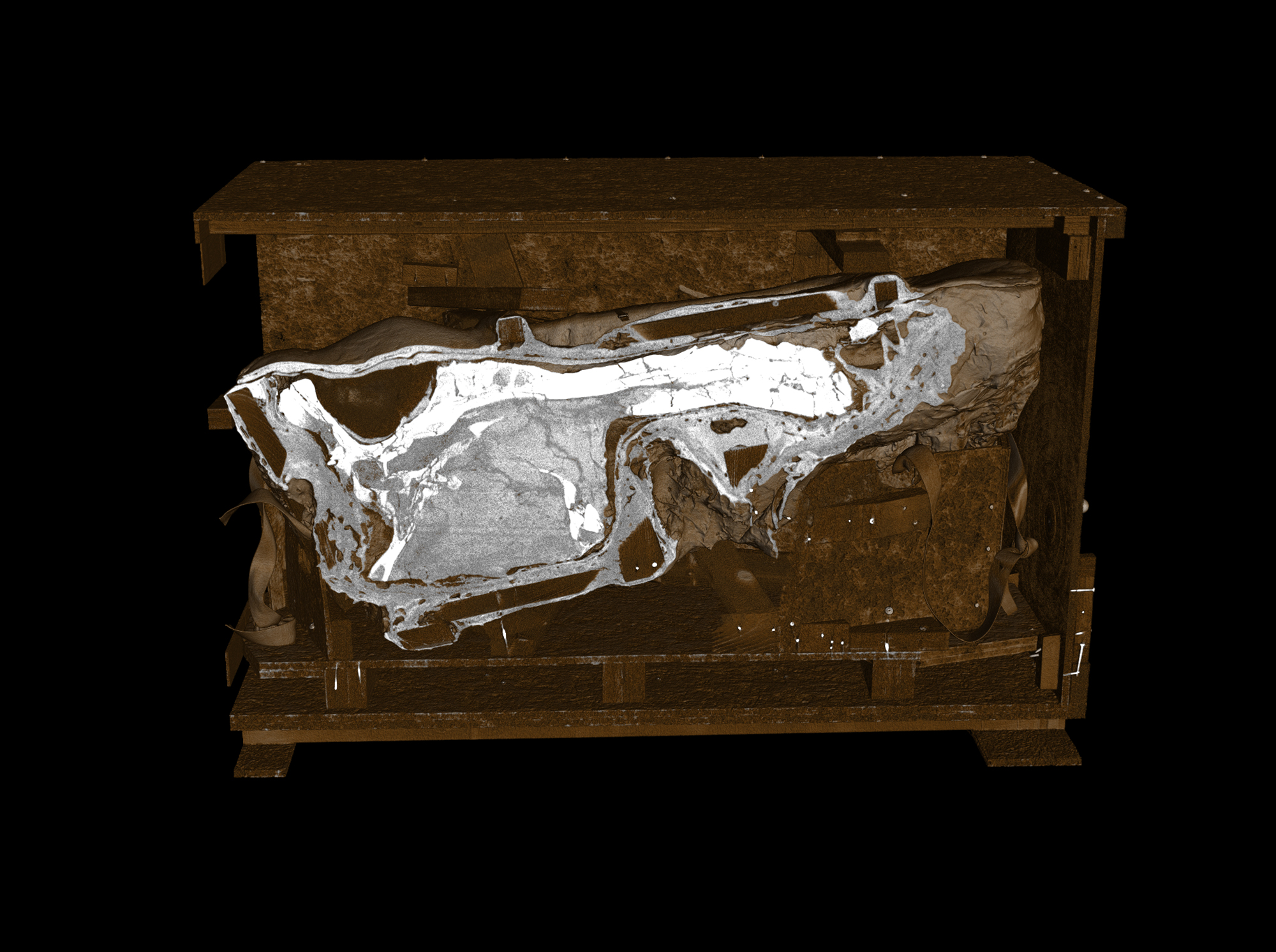Fraunhofer presents computed tomography scan of major T. rex skull find
Fürth, June 19, 2015: On June 19 the Development Center for X-Ray Technology, part of the Fraunhofer Institute for Integrated Circuits IIS, presented exclusive computer tomography images of a Tyrannosaurus rex, which the Naturalis Bio-diversity Center in the Netherlands describes as one of the best preserved T. rex finds of all time.
In 2013, researchers from the Naturalis Biodiversity Center in Leiden, Netherlands made a remarkable discovery in Montana in the United States: one of the best preserved Tyrannosaurus rex skeletons ever found. Experts date the remains of the female dinosaur to 66.4 million years. Alone the skull of the magnificent specimen weighs an incredible 500 kilograms.
Every single bone of this find offers new knowledge about the world's most famous dinosaur and its habitat. "This discovery will have an enormous impact on dinosaur research for decades to come," says Edwin van Huis, head of the Naturalis Biodiversity Center, with confidence.
To get a glimpse of the internal structures of the remains without damaging the fragile skeleton, researchers are relying on Fraunhofer know-how. Utilizing one-of-a-kind XXL computed tomography technology, the Fraunhofer Development Center for X-Ray Technology in Fürth, Germany is capable of generating high-resolution CD data, in this case from images of the T.rex. "We're extremely pleased that the Naturalis Biodiversity Center has placed their trust in us. With its unique CT technology, Fraunhofer's Development Center for X-Ray Technology can make a significant contribution to help shape dinosaur research," says Prof. Randolf Hanke, head of the center what the brain looked like without having to open up the irrecoverable skull," says Dr. Anne Schulp, paleontologist and dinosaur researcher at the Naturalis Biodiversity Center.
Fraunhofer Development Center for X-Ray Technology
The Fraunhofer Development Center for X-Ray Technology develops non-destructive inspection methods that allow the examination of objects with respect to flaws or quality defects without impairing their functionality. The specialist departments offer individual solutions from optical 3D measuring systems to industrial X-ray cameras as well as turnkey X-ray systems for industrial production levels. Moreover they offer structure and process analyses for research applications. The experts accompany the customer from the first idea through feasibility studies up to the marketable product.
Naturalis Biodiversity Center
The Naturalis Biodiversity Center is an internationally-recognized research facility that aims to describe, understand and conduct research in the field of biodiversity for the good of man and the future of our planet through the following activities:
- developing a collection of biological and geological diversity and making it available to more and more people
- carrying out scientific research that contributes to worldwide efforts aimed at restoring biodiversity and understanding interaction between the species
- using the collection to explain the history of nature in its historical and cultural context in a way that sparks the fantasies of all age groups and deepens their respect for nature


